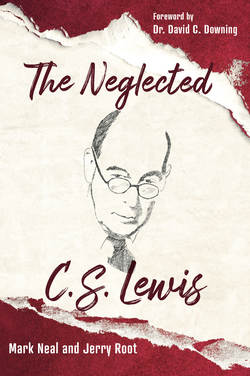Оглавление
Mark Neal. The Neglected C. S. Lewis
PRAISE FOR The Neglected C.S. Lewis
Contents
Foreword
IntroductionWhy Neglected?
Benefits of Reading the Neglected Works
Overview of the Neglected Works
Chapter 1The Glory of the Ideal
Medieval Allegory and Courtly Love
From Courtly Love to a Christian Concept of Marriage
Setting the Stage for Edmund Spenser
Spenser’s Goal for The Fairie Queene
On a Journey of Discovery
Chapter 2Civil Debate in an Age of polarity
Behind Lewis’s Challenge to Tillyard
The Essence of the Debate
The Content of Lewis’s Argument
1. TO DESCRIBE EMOTION IS TO HAVE GOTTEN BEYOND THE EMOTION
2. THE LITERARY CRITIQUE NECESSARY FOR DRAMA
3. THE PROBLEM OF TEXTS WITH MULTIPLE AUTHORS, AND OF TRANSLATIONS
4. THE PROBLEM OF THE “SHARED IMAGINATION”
5. THE AUTHOR’S ROLE AS A WINDOW
6. THE PROBLEM OF EMBELLISHMENTS
Conclusion of Lewis’s First Objection to Tillyard
Tillyard’s Response
Lewis’s Second Argument
Lewis’s Third Argument
THE POET SEEKS TO DESCRIBE SOMETHING OF THE OBJECTIVE WORLD
A THEORY OF POETRY
LEWIS’S THEORY APPLIED TO LITERARY TEXTS
Final Observations
Chapter 3A Book Born in Friendship
The Figure of Arthur
Williams and the Arthuriad
LOGRES (PRONOUNCED: LOW’ GRESS)
BROCELIANDE (PRONOUNCED: BRO-SEALY, AHN’ DAY)
BYZANTIUM
Further Concepts in the Arthuriad
Other Theological Ideas
Bringing the Hidden to Light
Chapter 4From Drab to Golden
The Narrative Thread
Definition of the Drab Age
Definition of the Golden Age
New Learning and New Ignorance
Highlights of OHEL
THE CLOSE OF THE MIDDLE AGES IN SCOTLAND
THE CLOSE OF THE MIDDLE AGES IN ENGLAND
MICHAEL DRAYTON
THE AGE OF RELIGIOUS CONTROVERSY AND TRANSLATION
The Matter of Translation
The Golden Age
A Golden Thread
Chapter 5Unlocking the Doors of Language
Principles of Meaning Change in Language
The Death of Language
Tactical Definitions
Unlocking the Doors
Chapter 6Becoming a Thousand Men
On Reading for the Many
On Reading for the Few
How the Few Misread
Lewis’s Method of Literary Criticism
Why This Book Is Important
Chapter 7The Heavens Declare the Glory
Background to the Model
Sources from Which the Model was Derived
The Model
Influence of the Model Then and Now
Chapter 8A Defense of Old Ideas
“De Descriptione Temporum”
Importance of this Essay
“Bluspels and Flalansferes: A Semantic Nightmare”
Toward Thinking Clearly
ConclusionBearings on the Bright Blur
Acknowledgments
AppendixAdditional Neglected Works of C. S. Lewis
A Preface to Paradise Lost
Image and Imagination
Of Other Worlds
Rehabilitations
Spenser’s Images of Life
Studies in Medieval and Renaissance Literature
They Asked for a Paper
Bibliography
Index
Scripture References
About Paraclete Press
You may also be interested in…
Отрывок из книги
“In 1952 Lewis disclosed that writing his magnum opus on the literature of the sixteenth century had been his ‘top tune’ for fifteen years and all the other books he wrote during that period were ‘only its little twiddly bits.’ It may surprise some readers to hear Lewis describe The Lion, the Witch and the Wardrobe, The Screwtape Letters and The Abolition of Man—to mention just three—as mere twiddly bits in comparison with the main melody of his output. But that was how he saw it. Neal and Root are to be commended for rehabilitating that ‘top tune’ and other similarly neglected works in this clear, useful, and informative survey.”
—Michael Ward, University of Oxford, co-editor of The Cambridge Companion to C. S. Lewis
.....
Lewis takes his readers on a journey to discover the glory of God’s ideal in marriage as it was traced in the developing literature of the Middle Ages. It is a journey as timely today as it was in the days of Chaucer and Spenser. In this way, Lewis as a faith-integrated Christian scholar provides an example of how sound scholarly work can function—as an apologetic for faith—speaking to the culture without preaching. In his personal life, we know that Lewis held marriage in high regard without neglecting the truth that even the best of marriages can have their ups and downs. This does not count against marriage; it only means that those who would make the best approximations to a good marriage must do so with eyes wide open. For example, in The Horse and His Boy, Shasta (Prince Cor) and Aravis argue throughout their adventure. And Lewis concludes the story realistically:
Aravis also had many quarrels (and, I’m afraid even fights) with Cor, but they always made it up again: so that years later, when they were grown up, they were so used to quarrelling and making it up again that they got married so as to go on doing it more conveniently.42
.....
